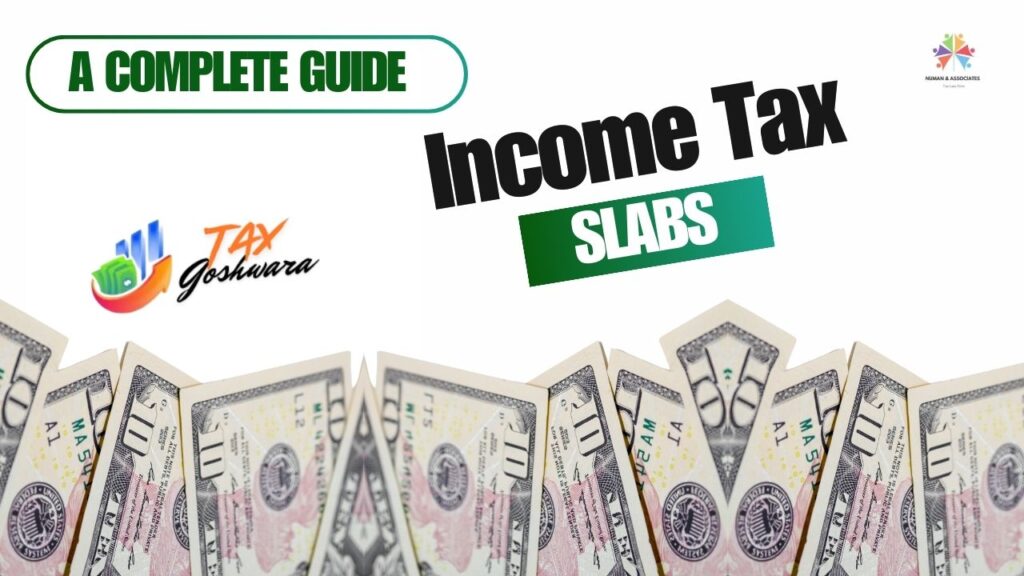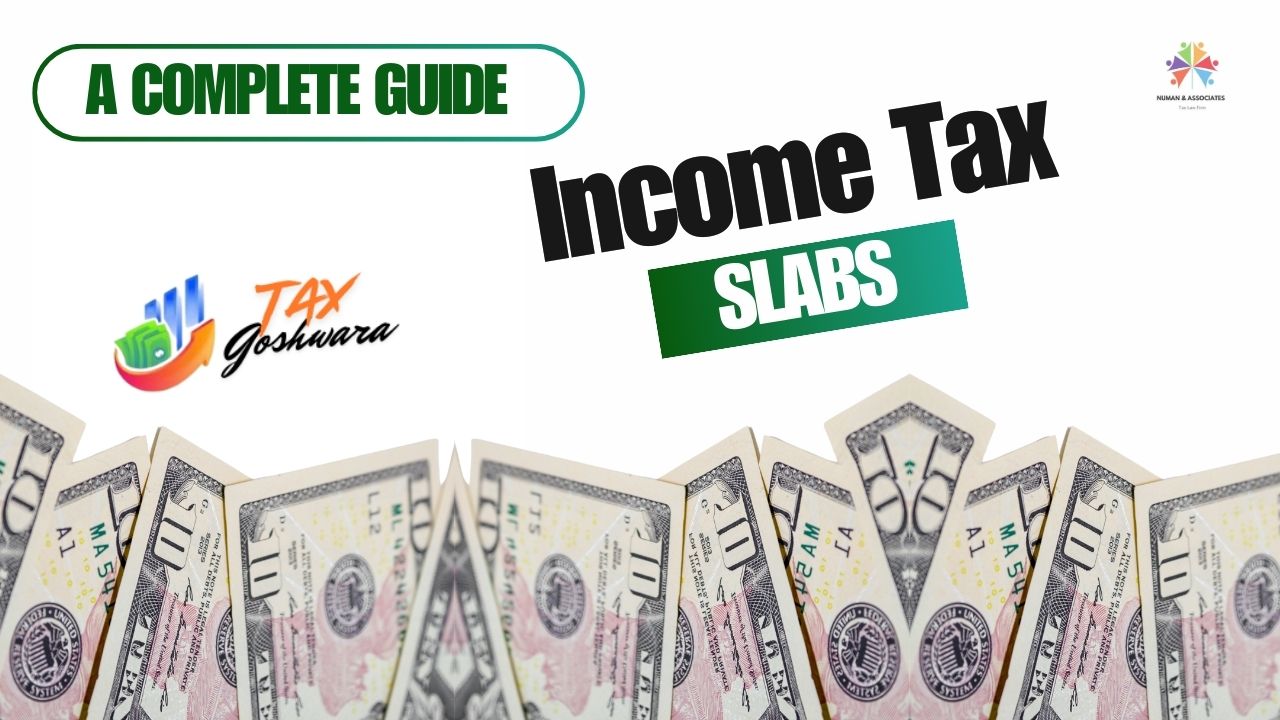Income Tax Slabs 2025 – 2026: A Comprehensive Review
Pakistan’s federal budget for the fiscal year 2025-2026 introduces important updates to the income tax system, focusing on easing the load for salaried workers. These changes, outlined in the Finance Act 2025-26, adjust tax rates and brackets to offer relief, especially for those with lower and middle incomes.
This article breaks down the key details in a straightforward way, using the latest available information to help you understand how these changes might affect you.

Overview of the 2025-2026 Income Tax Relief
In the new budget announced on June 10, 2025, Finance Minister Muhammad Aurangzeb introduced major tax relief for salaried individuals. The government has adjusted tax brackets to lower rates, allowing people to keep more of their income.
- Entry-level professionals earning between Rs. 600,000 and Rs. 1.2 million per year could save up to 80% on taxes.
- Middle-income earners in the range of Rs. 1.2 million to Rs. 4.1 million will see steady reductions, meaning more money in hand each month.
- High-income earners above Rs. 4.1 million will get only about a 3% cut, keeping relief balanced.
Other measures include a 10% salary raise and a 7% pension increase for government employees. The FBR also aims to collect Rs. 14.131 trillion in taxes this year.
Overall, these steps are expected to benefit more than 2.5 million salaried people, reduce monthly deductions, and improve financial stability despite inflation.
New Income Tax Slabs for 2025-2026
The revised tax slabs simplify the system and lower rates for most earners. The basic exemption limit stays at Rs. 600,000 annually, meaning no tax on incomes up to that amount. For higher incomes, taxes are calculated progressively, with bigger reductions for lower brackets.
Here’s a clear breakdown based on the Finance Act 2025-26.
| Monthly Taxable Salary | Annual Salary | Total Tax 2025 | Total Tax 2026 | Monthly Tax 2025 | Monthly Tax 2026 | Decrease Per Month |
|---|---|---|---|---|---|---|
| 50,000 | 600,000 | – | – | – | – | – |
| 100,000 | 1,200,000 | 30,000 | 6,000 | 2,500 | 500 | (2,000) |
| 150,000 | 1,800,000 | 120,000 | 72,000 | 10,000 | 6,000 | (4,000) |
| 200,000 | 2,400,000 | 230,000 | 162,000 | 19,167 | 13,500 | (5,667) |
| 225,000 | 2,700,000 | 305,000 | 231,000 | 25,417 | 19,250 | (6,167) |
| 250,000 | 3,000,000 | 380,000 | 300,000 | 31,667 | 25,000 | (6,667) |
| 300,000 | 3,600,000 | 550,000 | 466,000 | 45,833 | 38,833 | (7,000) |
| 350,000 | 4,200,000 | 735,000 | 651,000 | 61,250 | 54,250 | (7,000) |
| 400,000 | 4,800,000 | 945,000 | 861,000 | 78,750 | 71,750 | (7,000) |
| 450,000 | 5,400,000 | 1,155,000 | 1,071,000 | 96,250 | 89,250 | (7,000) |
| 500,000 | 6,000,000 | 1,365,000 | 1,281,000 | 113,750 | 106,750 | (7,000) |
| 550,000 | 6,600,000 | 1,575,000 | 1,491,000 | 131,250 | 124,250 | (7,000) |
| 600,000 | 7,200,000 | 1,785,000 | 1,701,000 | 148,750 | 141,750 | (7,000) |
| 800,000 | 9,600,000 | 2,625,000 | 2,541,000 | 218,750 | 211,750 | (7,000) |
| 1,000,000 | 12,000,000 | 3,811,500 | 3,692,850 | 317,625 | 307,738 | (9,888) |
| 1,500,000 | 18,000,000 | 6,121,500 | 5,981,850 | 510,125 | 498,488 | (11,638) |
| 2,000,000 | 24,000,000 | 8,431,500 | 8,270,850 | 702,625 | 689,238 | (13,388) |
| 2,500,000 | 30,000,000 | 10,741,500 | 10,559,850 | 895,125 | 879,988 | (15,138) |
| 2,800,000 | 33,600,000 | 12,127,500 | 11,933,250 | 1,010,625 | 994,438 | (16,188) |
| 3,000,000 | 36,000,000 | 13,051,500 | 12,848,850 | 1,087,625 | 1,070,738 | (16,888) |
Key highlights from the slabs:
- Rs. 600,000 to Rs. 1.2 million annually: Tax rate dropped from 2.5% to 1%, as approved by the National Assembly’s Standing Committee on Finance.
- Rs. 1.2 million to Rs. 4.1 million annually: Gradual reductions to support middle-class spending.
- Above Rs. 4.1 million annually: Small cuts, with the top rate still at 35%.
How to Calculate Your Income Tax for 2026
Figuring out your tax is straightforward with these steps:
- Add up your total annual income, including base salary, bonuses, and allowances.
- Subtract eligible deductions, such as contributions to retirement funds or approved charities.
- This gives you your taxable income.
- Match it to the slab table above and apply the rate.
- Divide the total tax by 12 for your monthly deduction.
For instance, if your annual taxable income is Rs. 1,800,000, your 2026 tax would be Rs. 72,000, or Rs. 6,000 per month.
Key Tax Reliefs and Exemptions to Remember
Several options can lower your tax bill:
- Donations for Zakat are fully deductible.
- Contributions to approved charities qualify for tax credits.
- Medical allowances may be exempt if not reimbursed.
- Pension and gratuity funds offer exemptions under certain rules.
Using these can further reduce what you owe, helping with financial planning.
What Hasn’t Changed?
Some elements remain the same:
- The top tax rate is still 35% for incomes over Rs. 4.1 million.
- The basic exemption limit is unchanged at Rs. 600,000.
- Anyone earning above this limit must file an annual tax return.
These constants ensure ongoing compliance while the new reliefs take effect.
Challenges and Criticisms
While many welcome the changes, not all views are positive. The Policy Research and Advisory Council (PRAC) has noted that the budget overlooks issues in the industrial sector, potentially leading to higher unemployment and economic instability. For salaried workers, the relief might not fully offset rising costs like inflation. Critics argue that without broader fixes, the benefits could be limited, especially for those in unstable job markets.
Why These Changes Matter
These updates benefit millions by:
- Reducing monthly tax deductions, leaving more money for daily needs.
- Encouraging people to report income voluntarily.
- Supporting better saving and budgeting habits.
For example, a middle-income earner saving Rs. 7,000 monthly could use that for education or family expenses, boosting overall well-being.
Conclusion
The 2025-2026 income tax slabs represent a meaningful push to support Pakistan’s salaried workforce through lower rates and targeted relief. By focusing on low and middle earners, the government seeks to balance economic growth with revenue needs. However, success will hinge on effective rollout and addressing wider challenges. If navigating these changes feels overwhelming, consider consulting tax experts for personalized guidance on deductions and filings.





